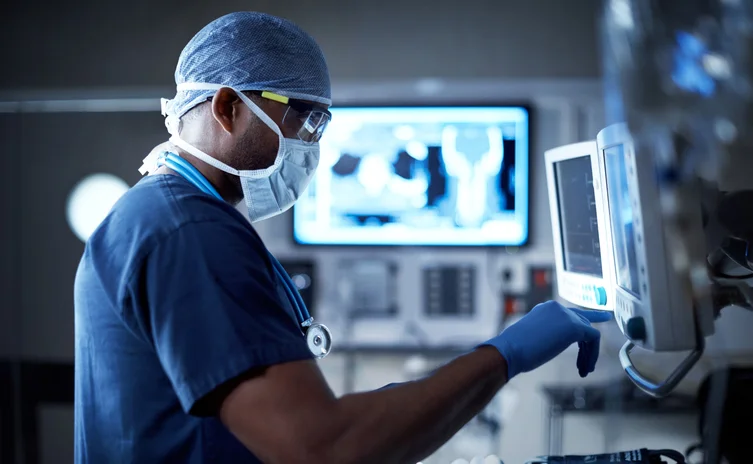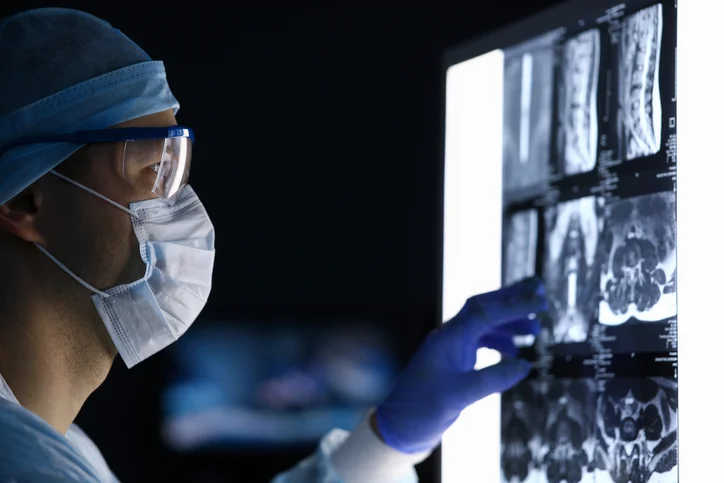At Schmidt & Clark, LLP, we are dedicated to helping individuals who have suffered due to dangerous furniture products.
Our experienced legal team is here to guide you through the process and fight for the compensation you deserve.
Table Of Contents
- NuVasive Magec Lawsuit Overview
- Latest NuVasive Magec Lawsuit Updates
- FDA Reports and Statistics
- NuVasive Magec Rod Injuries & Side Effects
- Do You Qualify for a NuVasive Magec Lawsuit?
- NuVasive Magec Recall Information
- Statute of Limitations for NuVasive Magec Lawsuits
- FAQs
- 1. How long does a NuVasive Magec lawsuit typically take to resolve?
- 2. What compensation amounts have been awarded in similar medical device lawsuits?
- 3. Can I still file a lawsuit if my child’s Magec rod was implanted several years ago?
- 4. How can patients determine if their complications are related to MAGEC rods?
- 5. Are there any recalls associated with MAGEC rods?
- 6. Can I join a class action lawsuit if I was affected by the MAGEC rod recall?
- 7. How long do I have to file a MAGEC rod lawsuit?
- 8. Will I need to go to court for a NuVasive Magec lawsuit?
- 9. What if my child needs revision surgery after I’ve already filed a lawsuit?
- Get a Free Magec Rod Lawsuit Evaluation With Our Lawyers
NuVasive Magec Lawsuit Overview
The NuVasive Magec Rod lawsuits involve allegations against the manufacturer for design defects resulting in device failure and serious health complications.
These lawsuits claim that despite being marketed as a solution that would reduce the need for multiple surgeries in children with early-onset scoliosis, the Magec System has been linked to numerous mechanical failures and biocompatibility issues.
The FDA has received multiple adverse event reports detailing complications including metallosis, rod breakage, and early device failure requiring revision surgeries.
Latest NuVasive Magec Lawsuit Updates
- March 7, 2025 – According to Drugwatch, NuVasive faces multiple lawsuits over its MAGEC spinal rods, which have been linked to serious complications such as device breakage and tissue damage in young scoliosis patients [1].
- December 18, 2020 – As explained by Anapol Weiss, families have filed lawsuits against NuVasive, alleging that MAGEC rods were defective and caused severe health issues in children due to inadequate warnings and manufacturing flaws [2].
FDA Reports and Statistics
The FDA has identified several specific issues with the NuVasive Magec System, including:
- End Cap separation
- O-ring seal failure
- Exposure of internal components to living tissue
- Adverse local tissue reactions
The FDA has acknowledged these problems affect multiple versions of the device, including:
- MAGEC Spinal Bracing and Distraction System
- MAGEC 2 Spinal Bracing and Distraction System
- MAGEC System External Remote Controller
- MAGEC System Model X device
- MAGEC System Model X rod
- MAGEC System Spinal Growing Rods
According to a 2022 National Library of Medicine study, approximately one in every thousand people in the U.S. suffers from scoliosis, with a small percentage diagnosed with early-onset scoliosis (EOS) before age 10 [3].
The FDA is aware of reports describing endcap separation, O-ring seal failure, and of potential exposure of internal components of this device to living tissue that may lead to adverse local tissue reactions.- The U.S. Food and Drug Administration.
NuVasive Magec Rod Injuries & Side Effects
The NuVasive Magec Rod System has been associated with numerous serious complications requiring medical intervention and often revision surgery.
- Metallosis: Metal debris depositing in soft tissues, causing systemic toxicity.
- Mechanical Failures: Bent or broken rods, failure to distract (lengthen) when required.
- Tissue Damage: Necrosis, skin discoloration, and local tissue reactions.
- Device Malfunction: End Cap separation and O-ring seal failure.
- Spinal Complications: Worsening of spinal curvature due to device failure.
- Revision Surgery: Painful additional procedures to remove or replace failed devices.
- Biocompatibility Issues: Internal components exposed to living tissue causing adverse reactions.
Related Article: Metal-on-Metal Hip Implants Prone to Metallosis
Do You Qualify for a NuVasive Magec Lawsuit?
You may qualify for a NuVasive Magec lawsuit if:
- Your child received a NuVasive Magec Rod System implant.
- The implantation occurred within the past few years (specific to your state’s statute of limitations).
- Your child experienced serious complications such as metallosis, device failure, or required revision surgery.
- Medical documentation exists linking these injuries to the NuVasive device.
- The injuries required medical treatment or hospitalization.
Evidence Required for a NuVasive Magec Lawsuit
To build a strong case, the following evidence will be necessary:
- Medical records documenting the initial implantation surgery.
- Diagnostic imaging showing device failure or complications.
- Records of any revision surgeries or treatments for complications.
- Physician notes connecting injuries to the device.
- Device identification information (model number, lot number).
Damages You Can Recover
Victims of defective NuVasive Magec Rod Systems may be entitled to compensation for:
- All medical expenses related to treating complications
- Future medical costs for ongoing care or additional surgeries
- Pain and suffering caused by device failure
- Loss of quality of life
- Parental lost wages for time spent caring for injured children
- Punitive damages against the manufacturer in some cases
NuVasive Magec Recall Information
On April 5, 2021, NuVasive placed all MAGEC devices on a global ship hold due to biocompatibility concerns with internal components exposed by end cap separation.
Although not officially a ‘recall,’ this voluntary action temporarily halted market availability.
In July 2021, the FDA permitted the modified MAGEC X (also known as MAGEC 2b), cleared in July 2020, to resume U.S. market availability after NuVasive lifted the ship hold, with existing restrictions and updates:
- Use limited to patients under 10 years old for early-onset scoliosis.
- Maximum implantation time of two years in the U.S.
- Labeling updated to discuss known risks, including mechanical failures and tissue reactions.
As NuVasive continues to investigate the root cause of these issues, the FDA is working with the manufacturer to evaluate new biocompatibility testing results and assess whether there is any clinically meaningful impact to patients with MAGEC devices.- The U.S. Food and Drug Administration.
Related Article: Precice Stryde Implant Lawsuit
Statute of Limitations for NuVasive Magec Lawsuits
The time limit for filing a NuVasive Magec lawsuit varies by state, typically ranging from 1-6 years from the date of injury or discovery of the injury.
In cases involving minors, many states toll (pause) the statute of limitations until the child reaches the age of majority.
It’s crucial to consult with an attorney promptly to ensure your claim is filed within the applicable deadline, as missing this window could permanently bar your right to compensation.
FAQs
1. How long does a NuVasive Magec lawsuit typically take to resolve?
The timeframe for resolving a NuVasive Magec lawsuit varies depending on case complexity, but most product liability cases take between 1-3 years from filing to resolution, whether through settlement or trial verdict.
2. What compensation amounts have been awarded in similar medical device lawsuits?
While each case is unique, similar medical device lawsuits have resulted in settlements ranging from tens of thousands to millions of dollars, depending on factors like injury severity, age of the patient, and extent of medical expenses.
3. Can I still file a lawsuit if my child’s Magec rod was implanted several years ago?
Possibly, depending on your state’s statute of limitations and when the complications were discovered. Many states have “discovery rules” that extend the filing deadline from when the injury was or should have been discovered.
Patients can determine if their complications are related to MAGEC rods by consulting with their healthcare provider, reviewing their medical history, and considering whether complications began or worsened after the device was implanted.
5. Are there any recalls associated with MAGEC rods?
Yes, specific models and lot numbers of MAGEC rods have been involved in recalls due to higher than expected rates of failure and other issues. Patients should check with their healthcare provider and the FDA website for information on recalls related to their specific device.
6. Can I join a class action lawsuit if I was affected by the MAGEC rod recall?
Yes, individuals affected by the MAGEC rod recall may join a class action lawsuit if one is available. Class action lawsuits allow multiple plaintiffs to combine their cases, providing a stronger collective legal action against the manufacturer.
7. How long do I have to file a MAGEC rod lawsuit?
The time limit to file a MAGEC rod lawsuit, known as the statute of limitations, varies by state. It’s crucial to consult with a lawyer promptly to ensure your claim is filed within the legal timeframe to preserve your rights.
8. Will I need to go to court for a NuVasive Magec lawsuit?
While many medical device lawsuits settle before trial, some cases do require court appearances. Your attorney will handle most court proceedings, and many aspects of your case can be managed without your physical presence.
9. What if my child needs revision surgery after I’ve already filed a lawsuit?
If additional complications or surgeries occur after filing a lawsuit, these new damages can typically be incorporated into your existing claim, potentially increasing the compensation you may receive.
See all related medical device lawsuits that our lawyers covered so far.
Get a Free Magec Rod Lawsuit Evaluation With Our Lawyers
Time is limited to pursue legal action against NuVasive for Magec Rod complications.
Most states restrict the filing period to just a few years from the date of injury or discovery of injury. Waiting too long could permanently forfeit your right to compensation.
Schmidt & Clark, LLP offers:
- Free, confidential consultations to evaluate your case
- No upfront costs or fees for our services
- Payment only if we win your case through settlement or verdict
Don’t delay in seeking the compensation your family deserves for the suffering caused by these defective medical devices.
References:
- https://www.drugwatch.com/nuvasive-magec/lawsuits/
- https://www.gov.uk/drug-device-alerts/spinal-implant-magec-system-model-x-rods-risk-of-failure-in-use-mda-2020-010
- https://pmc.ncbi.nlm.nih.gov/articles/PMC9458941/

 Published by
Published by 
